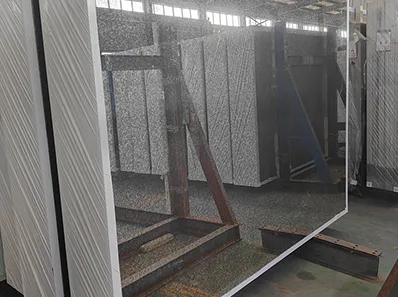Dec . 05, 2024 10:36 Back to list
low emissivity glass
Understanding Low Emissivity Glass A Smart Choice for Energy Efficiency
Low emissivity glass, often referred to as low-E glass, has become a fundamental component in modern architectural design and energy-efficient building practices. This innovative material is specifically designed to minimize the amount of infrared and ultraviolet light that comes through glass without compromising the amount of visible light that enters a building. By understanding its properties and advantages, homeowners and builders alike can make informed decisions for energy efficiency and comfort.
What is Low Emissivity Glass?
Low-E glass is coated with a thin layer of metallic oxide that reflects heat and ultraviolet rays from the sun. The low emissivity name refers to the reduced amount of infrared energy that can escape from the interior of a building, thereby helping to maintain a stable indoor temperature. This feature is especially important for HVAC (heating, ventilation, and air conditioning) systems, as it helps them operate more efficiently, reducing energy consumption and costs.
The coatings applied to low-E glass are nearly invisible to the naked eye and come in various types, including passive and reflective low-E glass. Passive low-E glass is designed to maximize solar heat gain during winter months, while reflective low-E glass is aimed at minimizing heat gain during the summer. This versatility makes low-E glass a popular choice for a wide range of climates and applications.
Benefits of Low Emissivity Glass
1. Energy Efficiency One of the most significant advantages of low-E glass is its ability to reduce energy bills. By limiting heat transfer, low-E glass effectively retains warmth during winter and keeps interiors cooler during summer, resulting in reduced reliance on heating and cooling systems. Studies have shown that buildings with low-E glass can save up to 30% on energy costs compared to those with conventional glass.
low emissivity glass

2. UV Protection The special coating on low-E glass also helps protect indoor furnishings, flooring, and artwork from the damaging effects of UV radiation. Prolonged exposure to sunlight can lead to fading and deterioration of these items. By blocking up to 99% of harmful UV rays, low-E glass extends the lifespan of valuable possessions and enhances overall indoor comfort.
3. Comfort Low-E glass contributes to a more comfortable indoor environment. By preventing cold drafts in winter and reducing excessive heat gain in summer, it promotes a stable temperature throughout the building. This comfort not only enhances the quality of life for occupants but can also lead to increased productivity in workplace settings.
4. Environmental Impact The use of low-E glass contributes to a more sustainable building design. By reducing energy consumption, it helps lower greenhouse gas emissions associated with heating and cooling. In a world increasingly focused on sustainability, incorporating low-E glass into building designs aids in achieving environmental goals.
5. Noise Reduction Low emissivity glass can also provide acoustic benefits. Its denser structure can help to minimize noise pollution from external sources, contributing to a quieter and more peaceful indoor environment.
Conclusion
Low emissivity glass represents a significant advancement in building materials, combining functionality with energy efficiency. Its array of benefits, including energy savings, UV protection, and enhanced comfort, makes it an invaluable choice for anyone looking to build or renovate. As awareness of environmental issues continues to grow, the demand for innovative solutions like low-E glass will undoubtedly rise.
In a world where sustainability and efficiency are paramount, incorporating low-E glass is not just a smart choice but a necessary step towards creating a more energy-conscious and comfortable living environment. Whether in residential or commercial applications, this remarkable glass type sets the standard for the future of building design.
-
Safety and Style with Premium Laminated Glass Solutions
NewsJun.24,2025
-
Reinvents Security with Premium Wired Glass
NewsJun.24,2025
-
Premium Float Glass Line for Modern Architecture
NewsJun.24,2025
-
Low Emissivity Glass for Energy-Efficient Architecture
NewsJun.24,2025
-
High-Performance Insulated Glass Solutions for Modern Architecture
NewsJun.24,2025
-
Elevates Interior Style with Premium Silver Mirror
NewsJun.24,2025
Related PRODUCTS














